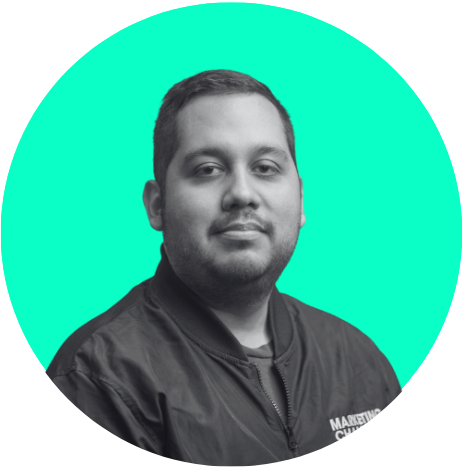Adaptability based on solid groundwork
- How to build and benefit from team diversity and dynamics
- Consistent way of working and structuring data & marketing operations to ensure efficiency and fast enablement
- Automation as a tool in creating transparency
Setting Your Team Up For Success: Standards Lead to Agility
The Wartsila team shares how they met the 2020 targets set at the beginning of the year – despite COVID, layoffs, major business shift to four divisions, events moving online, customer touchpoints increasingly digital. Adapting to new things, new tools, and putting new processes in place was essential to success.
About the Speakers and Company
Adele Heikkila: I’m a Digital Marketing Specialist in a company called Wartsila. I’m mainly working within the digital marketing campaigns personalization, SEO, ABM, just to name a few. In my free time, you’ll find me at the sports tracks.
Jaime Lopez: I’m the General Manager for Marketing Operations and Digital Acceleration at Wartsila. When not presenting or working, you might find me from a rugby pitch with my local club Helsinki Rugby Club.
Adele and Jaime hail from a company named Wartsila – a technology and lifecycle solution provider for both marine and energy – and they both work for the marine side of the business. 90% of trade is still done by vessels and Wartsila provides 50% of that service and 30% of the engines in the vessels are also most probably made by Wartsila. The company has 19,000 personnel of 148 nationalities in over 200 locations. So as we tend to say Wartsila is maybe one of the most unknown brands, but yet rather significant.
Survival Stems From Solid Groundwork
- Start building your team and planning your processes TODAY. Building your team with intentional diversity and operating with adaptability creates the groundwork for everyone to know what they are doing (and why), what other team members’ abilities are, and how to use the basic tools.
- Get processes in place along with the necessary tools.
- Believe in autonomy – believe in people, processes and technologies. Believe that the people you have hired know what they are doing. Put your trust in them, giving them the power to control their own work.
This groundwork not only helps keep existing team members happy and fulfilled, but enables new members to assimilate very quickly. Despite this virtual work environment, a new team member can get up to speed quickly with clear processes and documentation of how everything works. Of course everyone else is there to support new people, but having a consistent way of working and how we do things makes the onboarding so much better.
Fairness is the Foundation
The foundation of the team is fairness. All decisions have to be guided and orchestrated with a sense of fairness. It permeates everything we do. When everything is fair and when we have a high degree of trust, we can also afford ourselves an enormous degree of autonomy. We focus on what we deliver and rather than when we did it, how we did it and from where. Everybody has the freedom to work on their own hours in their own location as long as their targets are accomplished. This meant that the transition to working from home was quite natural and easy. Our industry turned upside down, but our team wasn’t.
People on our team have mastered the basic tools we use: Pardot, Salesforce, GoToWebinar and Sitefinity CMS. Anybody who joins the team needs to learn to kick ass in those four tools regardless of their role, making cross-position coverage much easier.
‘Tetris’ your MarTech Team
We’ve chosen to surround ourselves with people who are very diverse in every aspect. Competence-wise, we search for people who are different. We search for people who can tell us what we’re doing wrong, what we’ve been missing. For example, our team is composed of people with backgrounds as a full-stack marketer, development, execution specialists that are also extremely good and efficient with Pardot and Sitefinity, performance analysis, and more. We also still have the mission of a more overarching MA and CRM architecture. Cherish diversity and actively hire for it because great things come from it!
Standardization is Key
Besides the team having a sense of purpose, we have a crazy ambition level to be the best data-driven marketing team in B2B, period. With that intrinsic purpose and motivation, we can drive our team and our people to achieve much more than we ever thought was possible. We managed to turn from doing one webinar a quarter to doing 15 to 20 webinars a quarter, and our numbers are just growing.
How do we do that? One key aspect of this is to productize, procedurize and document everything you can. By standardizing everything that goes into a webinar (delivery times, SLAs, input we need, content, timeline, training, engagements), when a content owner sells or wants to organize a webinar, it’s easy and expectations are set appropriately. By creating this ‘cookie cutter’ approach, the team can free up their mental space and their effort to shine in things that they’re really passionate about and to deliver those crazy ambitious big projects that will get us to be actually the best team in B2B. This has allowed our rock stars to shine instead of being stuck in the details.
A standardized process doesn’t mean doing the exact same thing every time. By not using energy to develop the wheel over and over again, you have bandwidth to develop new and exciting things.
Another important item in standardization is to have your structures and naming conventions in place. We use the same naming convention throughout all of our tools such as Salesforce, Pardot and GoToWebinar. This means that no matter what you’re looking at, you can easily know what an asset is connected with. This also helps make it easy to measure and visualize the data, and compare data for similar campaigns over time.
Don’t Discount Transparency
In our team, we value transparency and trust over everything.This is crucial for people to feel safe to share their ideas, come back with their possible failures, or something that they are interested in and want to do. Transparency is also important when teams change, to be able to look back and see historical information.
How have we created transparency in our tools? First, by using standardized naming conventions throughout Salesforce, Pardot and morel. We also have a reporting process place – visibility to see what’s going on. We can easily see how all of the campaigns are connected throughout the tools we have.
Second, we use Asana (a project management tool). And I think this is a great way of working to share basically everything that we have – with automated processes. This tool is shared with the whole marketing team, not just the digital marketing ops team. Asana includes
- Calendars (yearly, webinar, ABM, email campaigns)
- Budget (including costs that can be shared between people)
- Team players (who is responsible for what)
- Timelines (when is it promised to be delivered)
- Details (campaign/connected campaign, target audience, etc.)
- Workload control (avoid duplicates and ad hoc requests, know how workload is shared, is it equal)
Our final tool is Teams, used for storage and sharing information with our team. We have folders where we store our data, our training material, everything. Teams also helps us collaborate with other departments, such as finance, C&B, businesses. With some bigger campaigns, it might be actually easier to have the project in Teams.
Wrapping Up
It’s all about consistency in both parts: your team and technologies. You might feel bored hearing about standardization like naming conventions, but respect the structure. Structure gives autonomy and responsibility to your team by creating trust and transparency. It gives team members control over the work they are doing. And within unsettled times like we are in now with COVID when you are not able to go to the office, it’s actually a relief to already have habits in place.
Finally, praise the diversity in your team and your tools. You need different kinds of people to your team from different cultures with different skill sets to learn from each other.




